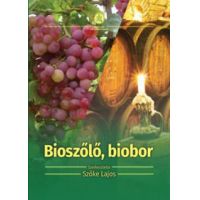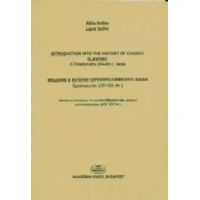Kosár
Találatok: Szőke Lajos
-

Bioszőlő, biobor
Mezőgazda KiadóA szerzők átadják mindazt az ismeretet, ami a termőhely, a fajta, a tenyészterület, a művelésmód kiválasztásáról, a talajművelés, a tápanyagellátás, a fitotechnika és a növényvédelem területéről tudni kell azoknak, akik át akarnak térni az ökológiai szőlőtermesztésre. Részletes leírást kap az olvasó azokról a hazai nemesítésű új fajtákról, amelyek különösen alkalmasak az ökológiai termesztésre. Csak ezen tudás birtokában elégíthetők ki a szőlő igényei, ami a kiváló minőségű bioszőlő előállításának feltétele. Az ökológiai termesztéssel előállított szőlő az alapja a biobor készítésének, amelynek lépései, technológiai, kezelési mozzanatai, betartandó szabályai, előírásai is megtalálhatók a könyvben. Röviden felvázolják a szerzők az ökológiai gazdálkodás hazai és külföldi helyzetét, a szabályozás elemeit, az ellenőrző szervezeteket, a biogazdálkodás szervezeteit, az Európában kialakult ökológiai szőlőtermesztés irányzatait. A könyv végén bemutatkozó ökológiai szőlőtermesztéssel és borászattal foglalkozó gazdálkodók sikerei bizonyítják, hogy ez a technológia megvalósításható és fenntartható. Külön fejezet hívja fel a figyelmet azokra a kutatási eredményekre, melyeket - hazai és nemzetközi együttműködés keretében - az utóbbi időben végzett közös munka során elértünk.Kiadás éve: 2018Oldalak száma: 310 oldalKötésmód: cérnafűzött, keménytáblásISBN: 9789632867380EAN: 9789632867380
-

A keleti kereszténység Magyarországon
Lucidus KiadóA tanulmánykötet miután bemutatja az ortodox, a görög katolikus és az örmény egyházat, külön vizsgálja egyházi művészetüket, zenéjüket, oktatásukat és egyházi nyelvüket. (Szerzők: Berke Feriz, Pirinyi István, Miskolczy Ambrus, Cselényi István, Nagy Márta stb.)Kiadás éve: 2007Oldalak száma: 310 oldalKötésmód: fűzveISBN: 9789639465404EAN: 9789639465404
-

Introduction into the History of Church Slavonic
Akadémiai KiadóModern Church Slavonic is the result of a long historical development which started as early as the first works appeared in Slavonic. If this is true, and it has been subject to a constant growth and decay characteristic of "living" languages, we cannot think of it as a "dead" language. The situation, however, is more complicated, because some changes in it were carried out by "a posteriori" language planning, and, in the last centuries, indeed, no changes took place in it (except for the Croatian Glagolitic variant). The present selection of the material intends to illustrate this development both through time and space. We start with 14-15-century manuscripts but concentrate on printed ecclesiastical works as it was printing which really consolidated this language. As a result, in our work we are concerned only with the ecclesiastical variant of Church Slavonic. In spite of its archaic character, the various Church Slavonic recensions reflect the influence of the Slavic languages respectively (there were more redactions before printing had spread). With this in mind, therefore, we publish sometimes one and the same text in different redactions. We have tried to provide the reader with samples taken from works which exerted the greatest influence on the formation of Church Slavonic (Gennadius Bible, Ostrih Bible, Elizabeth Bible etc.). The meaning of the word "redaction" in the headings of the chapters is based on linguistic and not on theological considerations. As far as it was possible we have followed the form of the original text. Nonetheless, this work does not pretend to be a source for Slavic palaeography. Our limited technical possibilities concern especially the Glagolitic script where we could not produce the contractions (ligatures) so characteristic of Glagolitic writing, nor could we use some capital letters in the same form. On the other hand, we have preserved the diacritic signs even if we sometimes have put in spaces to assist understanding. The texts are followed by a glossary where we give the Russian and English translation of the most difficult Church Slavonic words. This reader can be useful for all those who are interested in the study of Slavic languages, for students of Croatistics and for Orthodox and Greek Catholic theologians as well. The majority of the texts were taken from books preserved in the libraries of Budapest, Cracow, Kiev, Nyíregyháza (from the closter of Máriapócs) and the Vatican.Kiadás éve: 2005Oldalak száma: 180 oldalKötésmód: puhatáblás, ragasztókötöttISBN: 9789630581615EAN: 9789630581615
